Title Page
Copyright Page
About the Author
Contents
Preface
Acknowledgments
Symbols
Acronyms
Chapter 1: Introduction to Radar Systems and Signal Processing
1.1. History and Applications of Radar
1.2. Basic Radar Functions
1.3. Elements of a Pulsed Radar
1.3.1. Transmitter and Waveform Generator
1.3.2. Antennas
1.3.3. Receivers
1.4. Common Threads in Radar Signal Processing
1.4.1. Signal-to-Interference Ratio and Integration
1.4.2. Resolution
1.4.3. Data Integration and Phase History Modeling
1.4.4. Bandwidth Expansion
1.5. A Preview of Basic Radar Signal Processing
1.5.1. Radar Time Scales
1.5.2. Phenomenology
1.5.3. Signal Conditioning and Interference Suppression
1.5.4. Imaging
1.5.5. Detection
1.5.6. Measurements and Track Filtering
1.6. Radar Literature
1.6.1. Radar Systems and Components
1.6.2. Basic Radar Signal Processing
1.6.3. Advanced Radar Signal Processing
1.6.4. Radar Applications
1.6.5. Current Radar Research
References
Problems
Chapter 2: Signal Models
2.1. Components of a Radar Signal
2.2. Amplitude
2.2.1. Simple Point Target Radar Range Equation
2.2.2. Distributed Target Forms of the Range Equation
2.2.3. Radar Cross Section
2.2.4. Radar Cross Section for Meteorological Targets
2.2.5. Statistical Description of Radar Cross Section
2.2.6. Target Fluctuation Models
2.2.7. Swerling Models
2.2.8. Effect of Target Fluctuations on Doppler Spectrum
2.3. Clutter
2.3.1. Behavior of σ0
2.3.2. Signal-to-Clutter Ratio
2.3.3. Temporal and Spatial Correlation of Clutter
2.3.4. Compound Models of Radar Cross Section
2.4. Noise Model and Signal-to-Noise Ratio
2.5. Jamming
2.6. Frequency Models: The Doppler Shift
2.6.1. Doppler Shift
2.6.2. The Stop-and-Hop Approximation and Phase History
2.6.3. Measuring Doppler Shift: Spatial Doppler
2.7. Spatial Models
2.7.1. Coherent Scattering
2.7.2. Variation with Angle
2.7.3. Variation with Range
2.7.4. Noncoherent Scattering
2.7.5. Projections
2.7.6. Multipath
2.8. Spectral Model
2.9. Summary
References
Problems
Chapter 3: Pulsed Radar Data Acquisition
3.1. Acquiring and Organizing Pulsed Radar Data
3.1.1. One Pulse: Fast Time
3.1.2. Multiple Pulses: Slow Time and the CPI
3.1.3. Doppler and Range Ambiguities
3.1.4. Multiple Channels: The Datacube
3.1.5. Dwells
3.2. Sampling the Doppler Spectrum
3.2.1. The Nyquist Rate in Doppler
3.2.2. Straddle Loss
3.3. Sampling in the Spatial and Angle Dimensions
3.3.1. Spatial Array Sampling
3.3.2. Sampling in Angle
3.4. I/Q Imbalance and Digital I/Q
3.4.1. I/Q Imbalance and Offset
3.4.2. Correcting I/Q Errors
3.4.3. Digital I/Q
References
Problems
Chapter 4: Radar Waveforms
4.1. Introduction
4.2. The Waveform Matched Filter
4.2.1. The Matched Filter
4.2.2. Matched Filter for the Simple Pulse
4.2.3. All-Range Matched Filtering
4.2.4. Straddle Loss
4.2.5. Range Resolution of the Matched Filter
4.3. Matched Filtering of Moving Targets
4.4. The Ambiguity Function
4.4.1. Definition and Properties of the Ambiguity Function
4.4.2. Ambiguity Function of the Simple Pulse
4.5. The Pulse Burst Waveform
4.5.1. Matched Filter for the Pulse Burst Waveform
4.5.2. Pulse-by-Pulse Processing
4.5.3. Range Ambiguity
4.5.4. Doppler Response of the Pulse Burst Waveform
4.5.5. Ambiguity Function for the Pulse Burst Waveform
4.5.6. The Slow-Time Spectrum and the Periodic Ambiguity Function
4.6. Frequency-Modulated Pulse Compression Waveforms
4.6.1. Linear Frequency Modulation
4.6.2. The Principle of Stationary Phase
4.6.3. Ambiguity Function of the LFM Waveform
4.6.4. Range-Doppler Coupling
4.6.5. Stretch Processing
4.7. Range Sidelobe Control for FM Waveforms
4.7.1. Matched Filter Frequency Response Shaping
4.7.2. Matched Filter Impulse Response Shaping
4.7.3. Waveform Spectrum Shaping
4.8. The Stepped Frequency Waveform
4.9. The Stepped Chirp Waveform
4.10. Phase-Modulated Pulse Compression Waveforms
4.10.1. Biphase Codes
4.10.2. Polyphase Codes
4.10.3. Mismatched Phase Code Filters
4.11. Costas Frequency Codes
4.12. Continuous Wave Radar
References
Problems
Chapter 5: Doppler Processing
5.1. Moving Platform Effects on the Doppler Spectrum
5.2. Moving Target Indication
5.2.1. Pulse Cancellers
5.2.2. Vector Formulation of the Matched Filter
5.2.3. Matched Filters for Clutter Suppression
5.2.4. Blind Speeds and Staggered PRFs
5.2.5. MTI Figures of Merit
5.2.6. Limitations to MTI Performance
5.3. Pulse Doppler Processing
5.3.1. The Discrete-Time Fourier Transform of a Moving Target
5.3.2. Sampling the DTFT: The Discrete Fourier Transform
5.3.3. The DFT of Noise
5.3.4. Pulse Doppler Processing Gain
5.3.5. Matched Filter and Filterbank Interpretations of Pulse Doppler Processing with the DF T
5.3.6. Fine Doppler Estimation
5.3.7. Modern Spectral Estimation in Pulse Doppler Processing
5.3.8. CPI-to-CPI Stagger and Blind Zone Maps
5.4. Pulse Pair Processing
5.5. Additional Doppler Processing Issues
5.5.1. Combined MTI and Pulse Doppler Processing
5.5.2. Transient Effects
5.5.3. PRF Regimes
5.5.4. Ambiguity Resolution
5.6. Clutter Mapping and the Moving Target Detector
5.6.1. Clutter Mapping
5.6.2. The Moving Target Detector
5.7. MTI for Moving Platforms: Adaptive Displaced Phase Center Antenna Processing
5.7.1. The DPCA Concept
5.7.2. Adaptive DPCA
References
Problems
Chapter 6: Detection Fundamentals
6.1. Radar Detection as Hypothesis Testing
6.1.1. The Neyman-Pearson Detection Rule
6.1.2. The Likelihood Ratio Test
6.2. Threshold Detection in Coherent Systems
6.2.1. The Gaussian Case for Coherent Receivers
6.2.2. Unknown Parameters and Threshold Detection
6.2.3. Linear and Square-Law Detectors
6.2.4. Other Unknown Parameters
6.3. Threshold Detection of Radar Signals
6.3.1. Coherent, Noncoherent, and Binary Integration
6.3.2. Nonfluctuating Targets
6.3.3. Albersheim’s Equation
6.3.4. Fluctuating Targets
6.3.5. Shnidman’s Equation
6.4. Binary Integration
6.5. Constant False Alarm Rate Detection
6.5.1. The Effect of Unknown Interference Power on False Alarm Probability
6.5.2. Cell-Averaging CFAR
6.5.3. Analysis of Cell-Averaging CFAR
6.5.4. CA CFAR Limitations
6.5.5. Extensions to Cell-Averaging CFAR
6.5.6. Order Statistic CFAR
6.5.7. Additional CFAR Topics
6.6. System-Level Control of False Alarms
References
Problems
Chapter 7: Measurements and Tracking
7.1. Estimators
7.1.1. Estimator Properties
7.1.2. The Cramèr-Rao Lower Bound
7.1.3. The CRLB and Signal-to-Noise Ratio
7.1.4. Maximum Likelihood Estimators
7.2. Range, Doppler, and Angle Estimators
7.2.1. Range Estimators
7.2.2. Doppler Signal Estimators
7.2.3. Angle Estimators
7.3. Introduction to Tracking
7.3.1. Sequential Least Squares Estimation
7.3.2. The α –β Filter
7.3.3. The Kalman Filter
7.3.4. The Tracking Cycle
References
Problems
Chapter 8: Introduction to Synthetic Aperture Imaging
8.1. Introduction to SAR Fundamentals
8.1.1. Cross-Range Resolution in Radar
8.1.2. The Synthetic Aperture Viewpoint
8.1.3. Doppler Viewpoint
8.1.4. SAR Coverage and Sampling
8.2. Stripmap SAR Data Characteristics
8.2.1. Stripmap SAR Geometry
8.2.2. Stripmap SAR Data Set
8.3. Stripmap SAR Image Formation Algorithms
8.3.1. Doppler Beam Sharpening
8.3.2. Quadratic Phase Error Effects
8.3.3. Range-Doppler Algorithms
8.3.4. Depth of Focus
8.4. Spotlight SAR Data Characteristics
8.5. The Polar Format Image Formation Algorithm for Spotlight SAR
8.6. Interferometric SAR
8.6.1. The Effect of Height on a SAR Image
8.6.2. IFSAR Processing Steps
8.7. Other Considerations
8.7.1. Motion Compensation and Autofocus
8.7.2. Autofocus
8.7.3. Speckle Reduction
References
Problems
Chapter 9: Introduction to Beamforming and Space-Time Adaptive Processing
9.1. Spatial Filtering
9.1.1. Beamforming
9.1.2. Adaptive Beamforming
9.1.3. Adaptive Beamforming with Preprocessing
9.2. Space-Time Signal Environment
9.3. Space-Time Signal Modeling
9.4. Processing the Space-Time Signal
9.4.1. Optimum Matched Filtering
9.4.2. STAP Metrics
9.4.3. Relation to Displaced Phase Center Antenna Processing
9.4.4. Adaptive Matched Filtering
9.5. Reduced-Dimension STAP
9.6. Advanced STAP Algorithms and Analysis
9.7. Limitations to STAP
References
Problems
Appendix A: Selected Topics in Probability and Random Processes
A.1. Probability Density Functions and Likelihood Functions
A.2. Important Probability Distributions in Radar
A.2.1. Power Distributions
A.2.2. Voltage Distributions
A.2.3. The Unfortunate Tendency in Radar to Call Power Distributions by the Name of the Voltage Distribution
A.2.4. Phase Distributions
A.3. Estimators and the Cramèr-Rao Lower Bound
A.3.1. The Cramèr-Rao Lower Bound on Estimator Variance
A.3.2. The CRLB for Transformed Parameters
A.3.3. Signals in Additive White Gaussian Noise
A.3.4. Signals with Multiple Parameters in AWGN
A.3.5. Complex Signals and Parameters in AWGN
A.3.6. Finding Minimum Variance Estimators
A.4. Random Signals in Linear Systems
A.4.1. Correlation Functions
A.4.2. Correlation and Linear Estimation
A.4.3. Power Spectrum
A.4.4. White Noise
A.4.5. The Effect of LSI Systems on Random Signals
Appendix B: Selected Topics in Digital Signal Processing
B.1. Fourier Transforms
B.2. Sampling, Quantization, and A/D Converters
B.2.1. Sampling
B.2.2. Quantization
B.2.3. A/D Conversion Technology
B.3. Spatial Frequency
B.4. Correlation
B.5. Vector-Matrix Representations and Eigenanalysis
B.5.1. Basic Definitions and Operations
B.5.2. Basic Eigenanalysis
B.5.3. Eigenstructure of Sinusoids in White Noise
B.6. Instantaneous Frequency
B.7. Decibels
Index
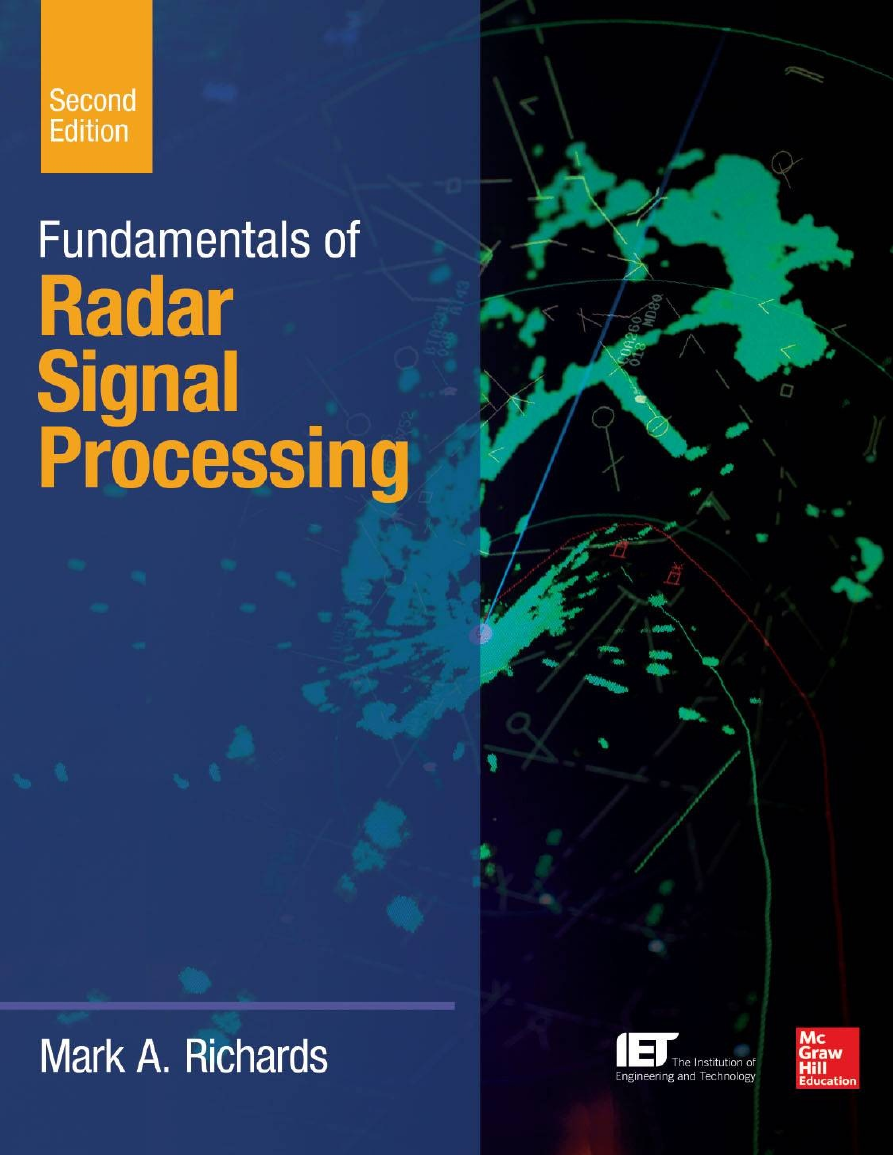
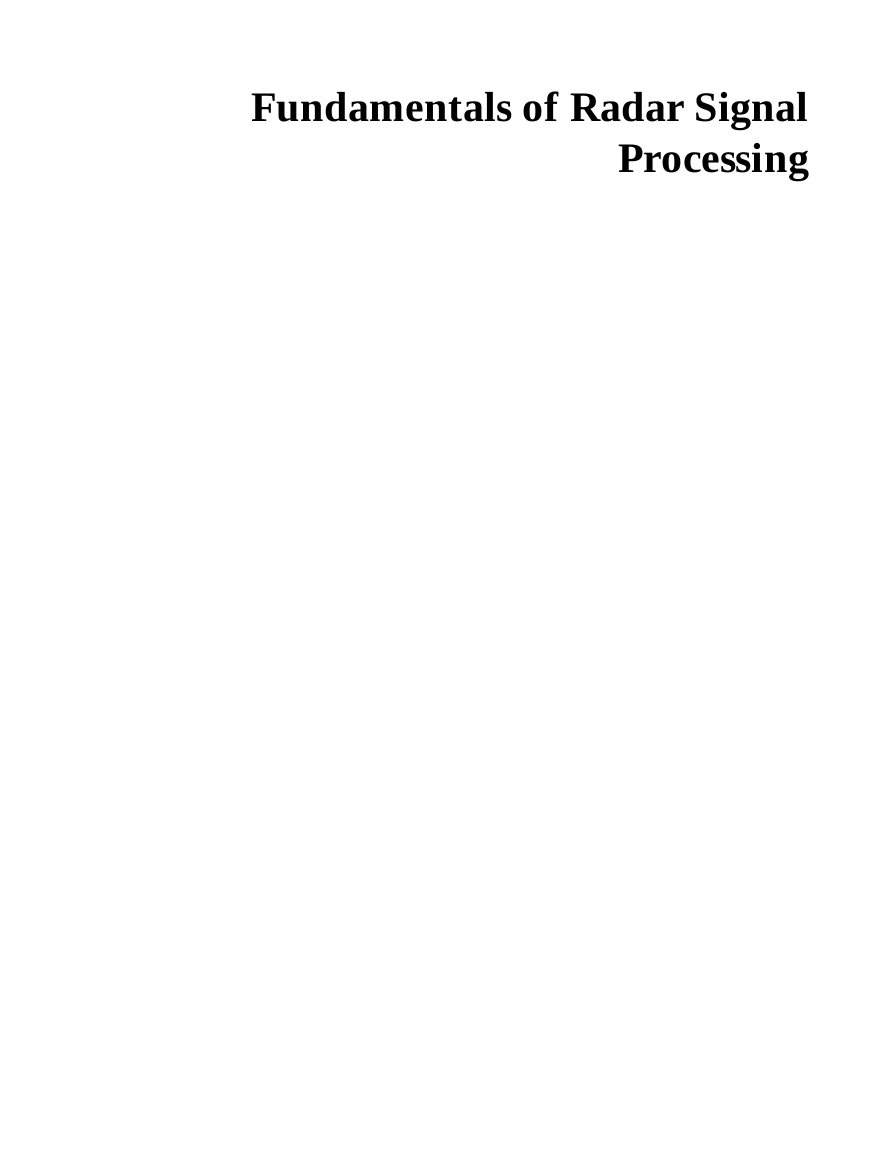
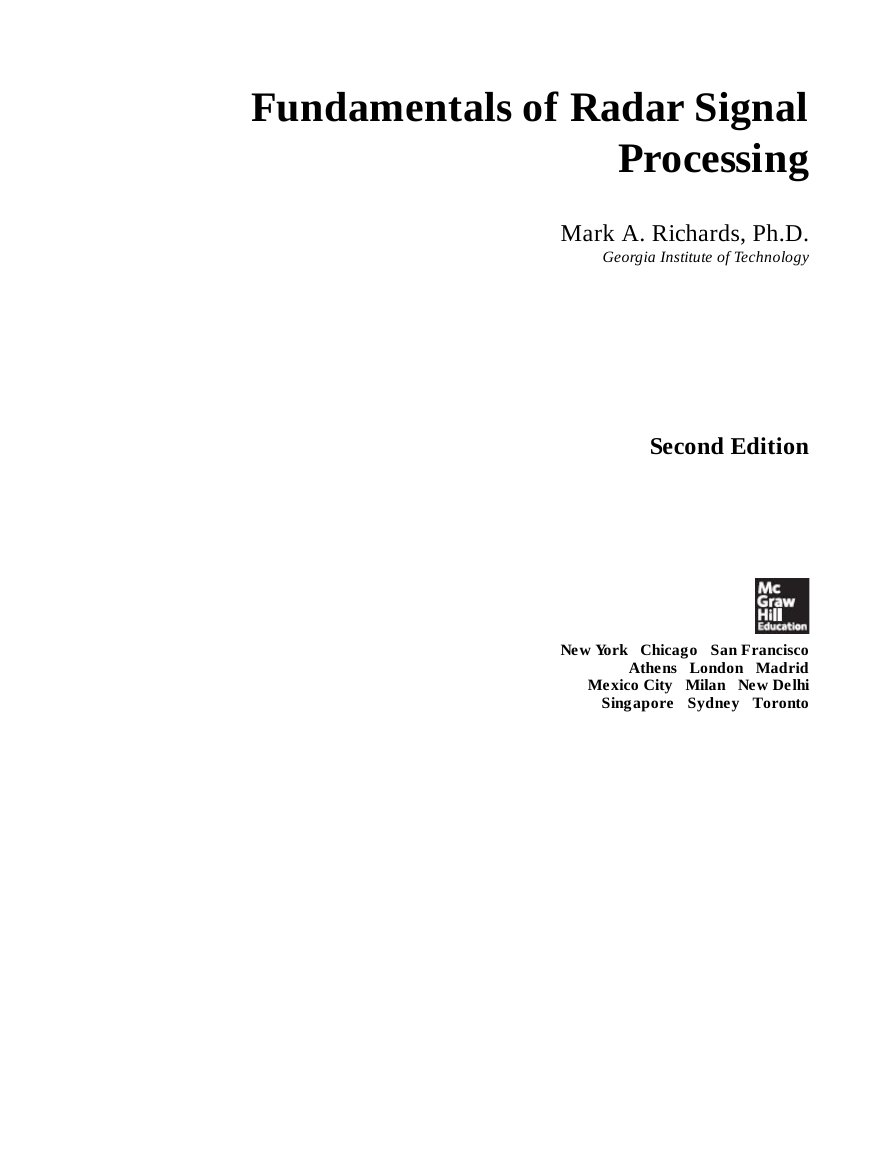
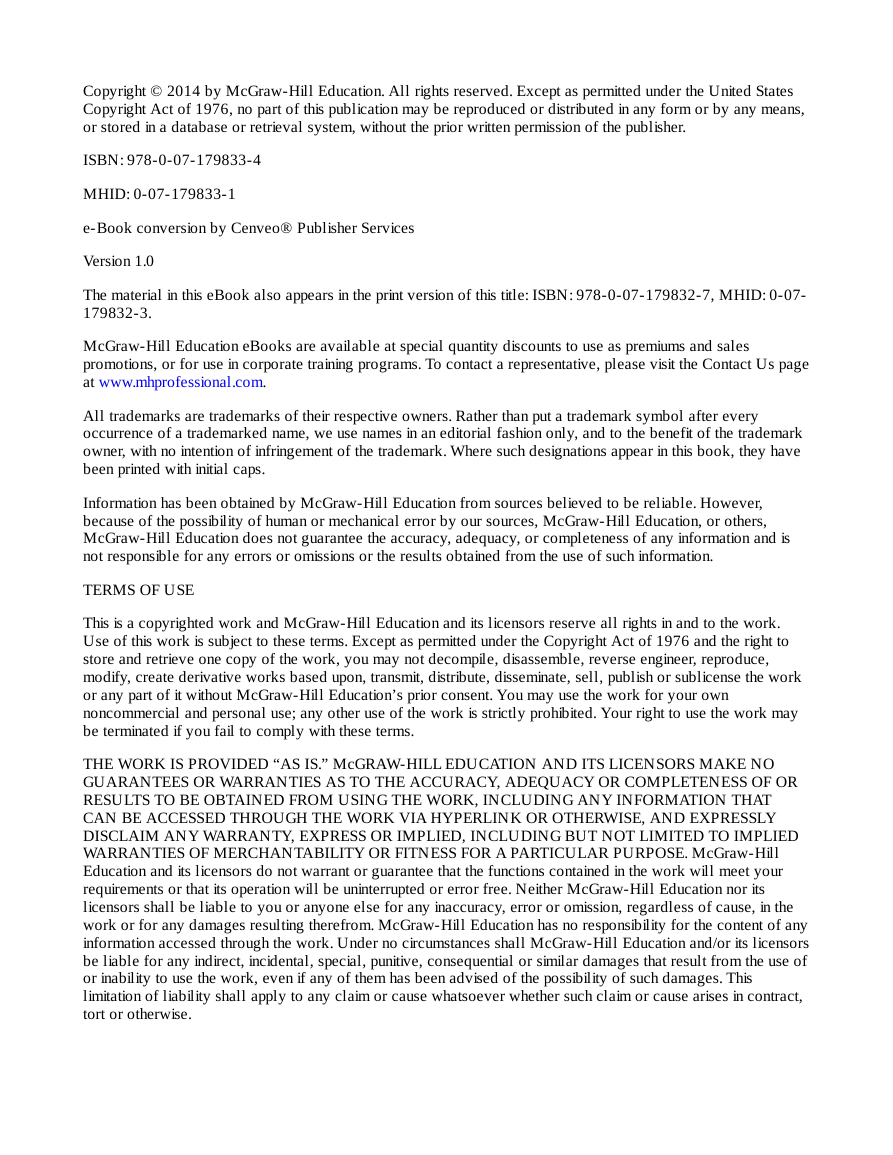

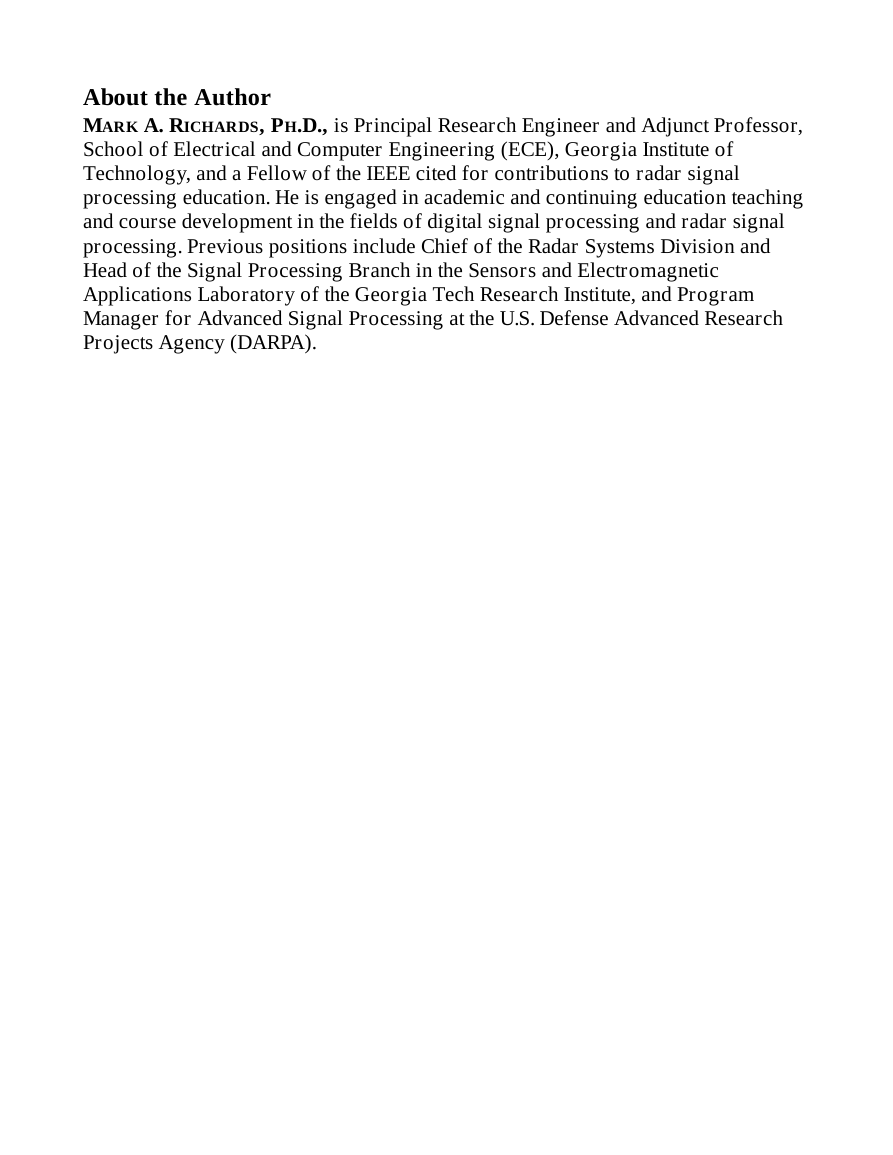

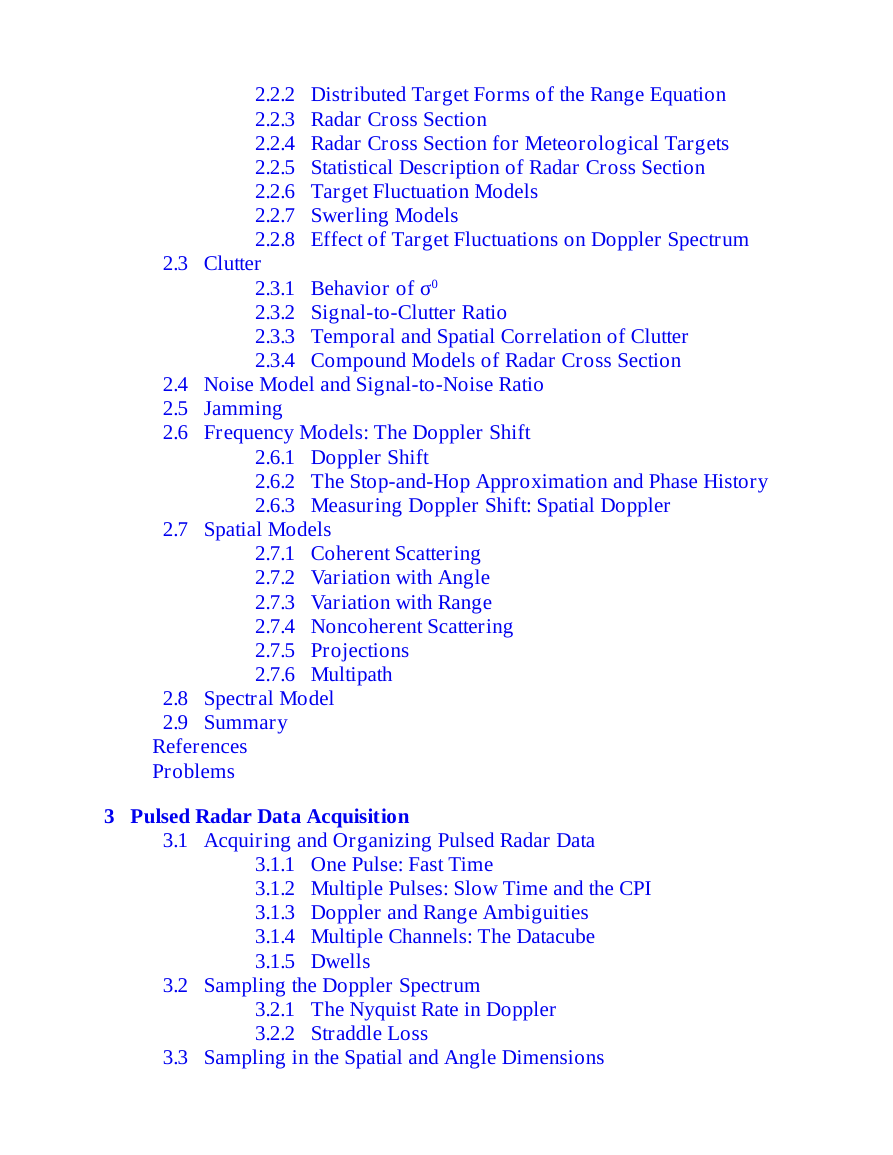








 2023年江西萍乡中考道德与法治真题及答案.doc
2023年江西萍乡中考道德与法治真题及答案.doc 2012年重庆南川中考生物真题及答案.doc
2012年重庆南川中考生物真题及答案.doc 2013年江西师范大学地理学综合及文艺理论基础考研真题.doc
2013年江西师范大学地理学综合及文艺理论基础考研真题.doc 2020年四川甘孜小升初语文真题及答案I卷.doc
2020年四川甘孜小升初语文真题及答案I卷.doc 2020年注册岩土工程师专业基础考试真题及答案.doc
2020年注册岩土工程师专业基础考试真题及答案.doc 2023-2024学年福建省厦门市九年级上学期数学月考试题及答案.doc
2023-2024学年福建省厦门市九年级上学期数学月考试题及答案.doc 2021-2022学年辽宁省沈阳市大东区九年级上学期语文期末试题及答案.doc
2021-2022学年辽宁省沈阳市大东区九年级上学期语文期末试题及答案.doc 2022-2023学年北京东城区初三第一学期物理期末试卷及答案.doc
2022-2023学年北京东城区初三第一学期物理期末试卷及答案.doc 2018上半年江西教师资格初中地理学科知识与教学能力真题及答案.doc
2018上半年江西教师资格初中地理学科知识与教学能力真题及答案.doc 2012年河北国家公务员申论考试真题及答案-省级.doc
2012年河北国家公务员申论考试真题及答案-省级.doc 2020-2021学年江苏省扬州市江都区邵樊片九年级上学期数学第一次质量检测试题及答案.doc
2020-2021学年江苏省扬州市江都区邵樊片九年级上学期数学第一次质量检测试题及答案.doc 2022下半年黑龙江教师资格证中学综合素质真题及答案.doc
2022下半年黑龙江教师资格证中学综合素质真题及答案.doc